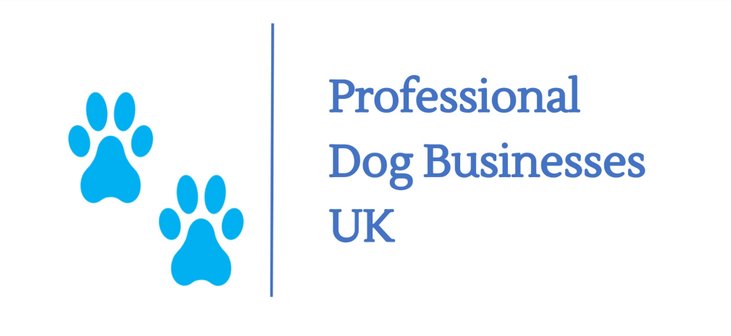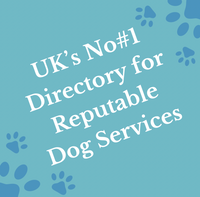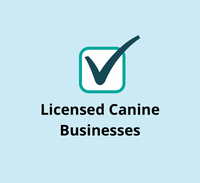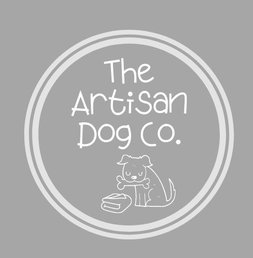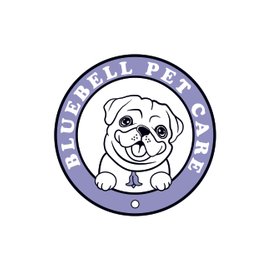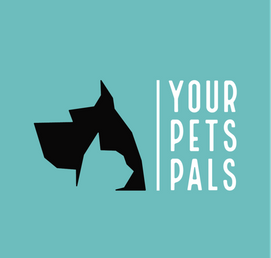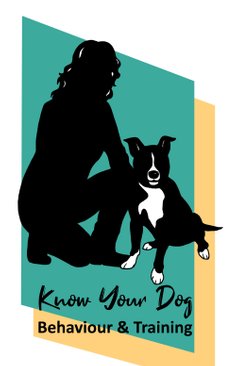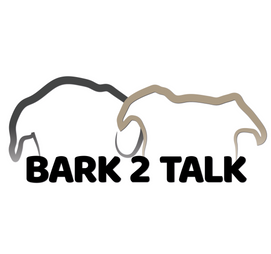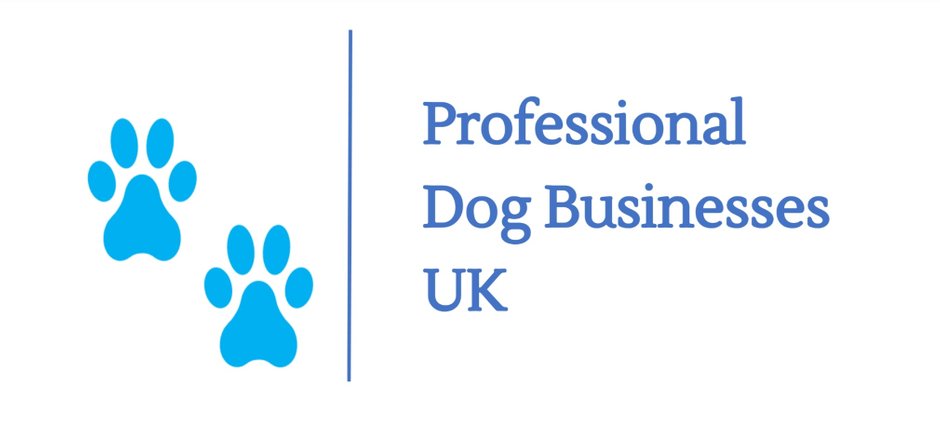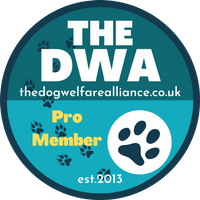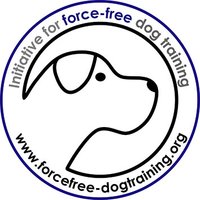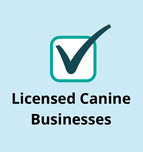Blogs
Interesting Canine Articles written by our Listed Professional Canine Businesses! Enjoy!
Enrichment for dogs? What is it and why do we need it?
By Sharon Keirle of The Artisan Dog Co. (www.artisandogco.co.uk)
Enrichment is a bit of a buzz word at the moment. Is it just another way for the big brands to make more money? What even is it and why do we need it? Here we are going to look at what enrichment is, why you and your dog need it, and then share some great games that you can play right now - without having to head to the shops.
What is Enrichment? Dog enrichment has boomed in popularity over recent years but, despite it being something that most dog-owners practice every day, many people haven't actually heard the word. However, I'm sure when you have gone to the pet shop you have noticed the ever growing displays by big brands of enrichment toys. Special bones, toys you fill with treats or special pastes that your dog has to work out how to get the food out. Activity toys like this can be a great way to keep your dog busy and focused when you're doing other things.
Enrichment means improving your dog's welfare by giving them more outlets for their natural behaviours. Basically, letting your dog be a dog! It's something that you already do without ever realising it. Letting them sniff on a walk, giving them a chew, or teaching them a new trick, these are all things that enrich your dogs life and provide mental stimulation.
Why you should practice enrichment with your dog? Dogs are natural scavengers, evolving alongside humans around 30,000 years ago by making the most of our scraps and leftovers. They would spend most of their day searching for food, and this is a sharp contrast to the life of the average pet dog today. Many dogs spend their days at home on their own, and are fed the same food, in the same bowl, in the same place, at the same times, every day.
Without a lot to do some dogs get bored, often finding their own, often destructive, entertainment. This is where enrichment comes in. Giving your dog puzzles to solve and new things to explore can not only help you avoid coming home to a mess, but can make a huge difference to your dog's mental health and welfare too.
Behaviours like licking and sniffing are known to have a calming effect, helping dogs to focus on something positive and de-stress. Sniffing in particular helps to lower your dog's heart rate, breathing rate, and blood pressure, all of which helps to reduce anxiety and hyperactivity.
However, enrichment isn't just about food - it's also about interacting with other dogs and people, having variety in their toys and physical exercise, and experiencing new things. Even simply giving your dog a choice between going left or right on their walk is enrichment, and can give them much more control over their life than they may have had previously. Here are some activities to get you started ...
1. Scatter feeding Probably the simplest form of food enrichment, scatter feeding is exactly what it sounds like. Scatter your dog's food over an area rather than feeding them from a bowl. This not only makes their meal last longer, but helps them engage their sense of smell to find every last piece of food. Try experimenting with different textures and surfaces for your scatter feeding: Use a snuffle mat for low-mess enrichment, Toss a handful of food into the garden, Hide treats in a blanket, twist it up, and let your dog unfurl it to find them all, Sprinkle biscuits across a yoga mat and roll it up.
2. Destruction boxes This is so much fun and cheap as chips! Start by taking an empty cereal box and putting your dog's food inside, leaving it open at one end to make sure it's not too difficult for them. Then let them chew, shred, and/or toss it around to get all the food out. If your dog is new to this game, be sure to keep an eye on them to make sure they don't eat anything that's unsafe for them. If you find that they rather enjoy the taste of cardboard or plastic, you can try using a holee ball (a hollow ball with a honeycomb pattern) and stuffing it with treats and fleece strips. They can pull the strips out of the ball to find the treats inside, scratching that same shredding itch as a destruction box would. Start with thin cardboard and leave the ends open, and over time you can progress to tougher objects as your dog builds confidence. Here are some more ideas:: Toilet roll tubes, Delivery boxes, Butter tubs, Milk cartons.
Remember that you're trying to make this fun, not frustrating, so resist the urge to keep making puzzles harder for your dog if they get really good at them.
3. It’s a Knockout - DIY obstacle course If you’ve ever watched canine agility trials you know one thing for sure — those dogs are getting a great mental and physical workout. You don’t have to be an agility expert and making your own homemade obstacle course isn’t quite as daunting as it sounds. Teaching your dog something new, such as jumping over a pole or weaving through an obstacle is quite a mental workout for them. Simple objects like blankets, some dog toys, broom, cushions can all be used. For example, if you want to teach your dog to jump over something? Prop up a broomstick with some books on either side. Want to teach your dog to bring you something specific? Teach them the names of a few toys and have them “bring you red bird.” Want to teach your dog to weave? Get them to walk through objects you place on the ground. Use items that you’ve already got on hand, and work on teaching your dog to use them in specific ways. In other words create your own obstacle course for your dog. The benefit of putting these obstacles together like this is that it’s a really big mental workout for your dog. You’re not just asking them to do one thing, you’re asking them to do one thing after another.
4. Sniffari How often have you found yourself on a walk, rushing to get back home and tugging on your dog's lead, whilst they're completely engrossed in sniffing? To you there's nothing interesting there at all, but your dog is 'seeing' a huge amount of information about anyone who's been there recently. Everything from their age and gender, to their emotions and what they've eaten recently. To help you visualise just how good their sense of smell is, a dog can detect a teaspoon of sugar in two Olympic-size swimming pools worth of water. Wow! A sniffari is a walk where you allow your dog to explore, sniff, and investigate to their heart's content. Let them lead a walk, choosing the route you take. Most importantly, your aim is to allow them to sniff as much as they like. This is particularly beneficial for puppies, rescue dogs, elderly dogs, and dogs with more anxious personalities. It doesn’t matter if you only make it 15 feet from your house in 30 minutes, as sniffing is incredibly beneficial for your dog's mental health. It lowers their heart rate, blood pressure, and breathing rate, helping them to de-stress and calm down.
5. Spin the bottle This is another great game for building confidence, but it also helps with patience and problem-solving skills! Simply grab an empty drinks bottle, making sure to rinse and dry it thoroughly before you start. Pour your dog's food or treats into the top, and carefully cut some holes down the side of the bottle for them to fall back out of. Start off with lots of large holes so the treats fall out very easily, and as your dog becomes used to the game you can make the holes smaller and space them farther apart. As your dog moves the bottle around the treats will rattle inside it, so make sure to keep an eye on them if they have sound sensitivities as it might be a bit much for them initially.
So there you go, 5 simple activities with little to no cost ... enjoy.
Tennis Balls......A Potential Danger?
By Robert Haynes of Delta One Canines (www.deltaonecanines.co.uk).
With the Wimbledon Tennis Championships being imminent, perhaps a few words about tennis balls in relation to our dogs, may be appropriate.
.
I’m sure many of us use a tennis ball as a retrieve toy for our dogs. I am equally sure that we must be aware of a slight risk of choking if the dog should swallow a tennis ball, and the action we should take if this should happen, however unlikely.
.
However, a potential problem with a tennis ball which may not be as well known is the problems that allowing the dog to chew the ball may cause.
.
Allowing a dog to chew a tennis ball could lead to dental wear and tear. That green fuzz on the surface of the ball might seem soft, but tennis balls are designed to withstand tennis courts and rackets, so the fuzz is actually quite abrasive. Accumulated dirt and grit on the surface of the ball increases the abrasive quality. As the dog chews on a tennis ball, the fuzz acts like sandpaper, gradually wearing down the teeth in a process called “blunting.” This can eventually lead to dental problems such as exposed tooth pulp and difficulty chewing.
.
Additionally, it is claimed that the glue that forms the seams of the ball is made from a substance that when mixed with the dogs saliva can adversely affect the enamel on the dogs teeth.
.
It is not being suggested that we desist from playing with tennis balls with our dogs, but it is suggested that we use the tennis ball as a retrieve toy and not something for the dog to lay down and chew.
.
Just one more thing for us to be aware of….Bob. (Delta One Canines).
8 Disrespectful Habits Dog Owners Need to Stop
By Aubrey Oiller of Bluebell Pet Care (www.bluebellpetcare.com)
Owning a dog is a big responsibility. Most of us get a dog and strive to be the best owner possible. In my many years of owning dogs and other animals, I have sadly seen all of these habits. These habits show disrespect not only to other people, but their pets and the environment as well. Do the right thing, be a responsible dog owner!
1. Leaving poo behind or hanging it up. The amount of dog poo I see left in my area is gross. Like, the last thing you want is to step in dog poo while you are picking up your dog's poo (Yes this has happened to me and I was fuming!) The other issue I see is bags of poo being left hanging in a tree like a smelly bauble. Again, can we say disgusting?! Not only is it unsightly, but some bags are not biodegradable and will stay there for awhile, bringing more harm to the environment. Dog fouling is under the Anti-Social Behaviour, Crime and Policing Act 2014 with on the spot fines of up to £80. Ensure you bring plenty of bags with you on walks. You can never have too many!
2. On the phone your whole walk/time out. While there are occasions you may need to take a call while out with your dog (we are human after all), it's just best left for another time. I've seen people on the phone chatting away while their dog is off running around and the owner is just not paying attention. This can lead to issues if your dog goes bounding to a reactive or elderly dog. Dogs are mischievous and anything can happen in a blink of an eye. Dogs need love and attention. No point in having a dog if you have no intentions of spending quality time with them. It's always better to be ready and prepared. Your dog will also thank you for being there for them and not ignoring them!
3. Letting an off lead dog go with no recall. This one at the moment is a real problem and is my biggest pet peeve. We all want dogs to run free and have a good time, who doesn't? However this can really bring some big consequences with it if not managed properly. Off lead should only be done in safe areas away from traffic. Your dog should be coming back every time when called before you even entertain letting them off their lead.
I only offer solo walks which means I have a few clients that are reactive or shy and do not enjoy another dog's company. So when I see another dog running up unattended or has poor recall, I have to be my client's guide to calmly lead them away from the situation. It also means I may be forced to change my walking route because someone is not paying attention and is letting their off lead dog interrupt others. Off lead dogs can really hurt a shy or reactive's dog's confidence. Be courteous to others and ensure you don't have this habit!
4. Peeing on other's property. Dog urine contains salts and other compounds that can leave stains and marks on property. It also carries a strong smell that no one wants lingering around. But most of all, it's just plain rude to allow your dog to have a pee on your neighbor's fence, shrubs, flowers, or bins. Male dogs do have the tendency to urinate frequently to mark their territory, but this is still no excuse. Your dog will be able to wait long enough to a more appropriate spot to relieve themselves. This sets boundaries for your dog and that they cannot just go wherever they please.
5. Endless barking or howling. If your dog is barking or howling constantly, there is an underlying issue that needs to be addressed with a vet or behaviourist. There are many ways to solve this issue other than making it everyone else's issue. Popping your dog in the back garden to just settle down or stop barking may save your ears, but your neighbors may have a different opinion. People will soon take a disliking to your dog (and you) if you are not careful in how to approach this issue.
6. Allowing dogs to jump. Dogs are friendly, we know! And jumping is usually a greeting trait of a very energetic and excited dog. But it's just not good manners or training to allow a dog to jump all over another person or another dog. Jumping up on a person could cause them to fall and injure themselves. Or they just might not be too keen on dogs. If your dog jumps all over another dog, this could bring out a nasty fight. If you know your dog can be a bit too excitable around new people, ask them to sit before the other person or dog approaches. If they are off lead, you are better off recalling and putting them back on the lead so that the other person can pass uninterrupted.
7. Forcing Friendly. Forcing a dog to be 'friendly' or sociable can lead to bites quickly. It can also cause them to fear other people or animals by not enjoying the experiences your have made them tolerate. This includes forced hugs, petting, or greeting other new dogs. A fearful dog may lash out to defend itself and it's usually then the dog that is blamed for it's behaviour and not the owner. Listen and pay attention to your dog's body language and behaviour. If they seem uncomfortable, do not force it. Each dog has their own personality and personal boundaries. Forcing is rude to the dog, but also irresponsible.
8. Saying ''They're friendly'' to excuse poor behaviour. Too many times have I seen a dog coming at me full speed with the owner frantically recalling and the dog not listening. After about 5 or 6 recall attempts, the owner just seems to give up and instead shouts to me, ''it's ok, he/she is friendly!'' I am glad your dog is friendly, but what if the dog I have with me is not? Dogs must be taught the manners and skills they need to be part of the community. It's up to the owner to do this. Allowing an untrained dog off lead is negligent and irresponsible. It could lead to a fight with another dog or an altercation with another person. It's just not worth it! Be thoughtful and keep your dog on a long line until they're ready to be let loose without bothering other people out on their walks.
Hungry? maybe your dog is.......
By Kevin Riley of Your Pet Pals Ltd (www.yourpetpals.co.uk)
Your dog’s digestive system is the combined functions of the mouth, teeth, salivary glands, oesophagus, stomach, intestine, pancreas, liver & gall bladder.
Digestion starts when food is placed in your dog’s mouth. Once swallowed, it begins its journey down the oesophagus into the stomach where it will be broken down into a liquid called chyme which then passes into the small intestine. This is where the main part of the digestion takes place. Assisted by the liver & pancreas the nutrients are adsorbed into the blood stream. When the small intestine has done its job, the
remaining food will pass into the large intestine (colon) whose main function is to extract any remaining water and nutrients. When this is done, what’s left is waste material that your dog’s body has no use for and it is going to become the stool.
A healthy digestive system is the foundation of overall health. You can feed your dog a high quality food but it won’t matter if the digestive system is compromised and nutrients aren’t absorbed. There are many reasons why the digestive system might be compromised and proper diagnosis is often a difficult challenge. The good news is that, once detected, nutritional management will often show great improvement regardless of the cause. The best food for your dog will depend on where the problem originates and his or her dietary history.
Protein is essential for proper immune function & to repair damaged intestinal tissue & it is therefore important not to feed too little protein. Protein quality is as important as quantity, so protein sources with high digestibility & bioavailability should be fed. If the gastrointestinal condition is believed to be immune-mediated, an elimination diet must be fed, the principle of which is based on feeding a food containing proteins that your dog has never previously been fed.
Fats are significantly more difficult to digest than other nutrients and therefore low fat diets are sometimes recommended. Looking at the Omega 6:3 ratios and increasing Omega 3 has been proved to have a positive effect as well. An alternative to a low fat diet is one that contains medium-chain triglycerides (MCTs), found in coconut oil. Unlike other fats, medium-chain triglycerides do not require pancreatic lipase & bile salts for digestion, thus making them ideal for dogs with impaired fat digestion.
While some dogs with a gastrointestinal condition can eat grains that are easily digested and gluten-free, other dogs improve dramatically when all grains are removed from their diet & a vegetable starch such as sweet potato is fed instead. In some cases, however, the problem isn’t just grain, but all starches. Fibre can be helpful in large intestine conditions but is contraindicated in conditions of the small intestine. In the case of the former, a blend of soluble & insoluble fibre is often recommended.
Several supplements can help with digestive disorders. L-Glutamine may help protect & repair the lining of the digestive tract. Fish oils reduce inflammation. Probiotics help restore a healthy microbial balance by adding ‘friendly’ bacteria to the dog’s intestines. This, in turn, can help protect against the overgrowth of pathogenic bacteria (the bad guys). A digestive enzyme supplement may be able to help some dogs who have difficulty absorbing adequate nutrients from their food.
I want to be a Dog Training and Behaviour Professional. Qualifications, experience, or both?
By Sally Lewis of Know Your Dog (www.knowyourdogdevon.com)
This is a question that comes up from time to time. How many people had the below happen, or heard of it happening?
You’re having some difficulties with your border collie. They’re chasing traffic. Your Great Aunt has told you to do X, Y, Z. She has had border collies for 20 years. She doesn’t need to do any research or studying when she has that much experience with the breed.
Let’s park that for a minute and look at something else.
You come to me and tell me you have pain coming from your back tooth. You were going to go to a dentist. Don’t do that, I can tell you how to sort it out. I’ve had teeth my whole life and never had a problem with mine.
You come to me and tell me that you’re having problems with your knees and were thinking about going to the physio. I’ve had knees my whole life. I can tell you how to sort those out.
You’re having regular headaches and you were thinking about going to the doctor. Why? I’ve had a head, and a brain, for my entire life. Let me diagnose your problem without you having to involve a professional, you don’t need to.
In all of those situations, you would tell me I’m being ridiculous. Of course you’re still going to see a dentist, a physiotherapist, a doctor. So WHY are we taking advice from people who have completely no specific level of study around dog behaviour, just because they’ve got some experience with dogs? Doing so could be detrimental to the wellbeing of your dog, and you could be opening yourself up to a world of problems. After all…how do you know if their experience is THE RIGHT experience, or if they’re been doing the right things? I’ve lost count of the amount of times I’ve received enquiries from people who have taken advice from a well-meaning friend or family member, and the recommendations have severely negatively impacted their dog (as a result, we are seeing the behavioural fall-out, shattered trust, and a fragmented relationship). Even worse, I am regularly contacted by people who have taken similar advice from dog ‘professionals’. People who do not keep up with their CPD, people who do not study, people who hold no qualifications or accreditations but still practice in the industry of dog training and behaviour simply because they can.
This is why qualifications and CPD are so important. The dog behaviour world is always evolving, new studies and findings are always being published, and to do the best that we can by the dogs that we support, dog professionals that I consider to be anything worth their salt commit themselves to hours of CPD every year. It doesn’t matter how much experience you have, ongoing CPD and studies should never be neglected.
So in comes the question, what about experience?
Having the knowledge and knowing the theory is one thing, but knowing how to apply it is a different ball game. There are so many ways you can get in to the dog training and behaviour industry – you can assist in classes, you can shadow a professional, you can seek a mentorship, an apprenticeship, you can volunteer somewhere.
I think every dog professional I know would agree that they have got better with experience. You get your eye in. You learn to see things you may not have seen when you first started out. Your knowledge has grown alongside it because of CPD, and your ways of applying that knowledge grows. You also learn where your areas of interest lie, you develop, and your experience can shine!
Equally, knowing your limits is essential. Knowing when to refer on to another professional who might have experience in areas you do not. You can even use this as a learning opportunity, if the other professional would be agreeable.
Many accrediting bodies require a specific level of study AND experience for their members, and this is why. To me, experience and CPD are both just as important as each other and that will always be the case. You wouldn’t ask your unqualified and professionally inexperienced Great Aunt to fix your dodgy tooth, the help with your knee, or your headaches. So don’t ask unqualified and professionally inexperienced people to help with your sentient family member when they need you. That’s what us dog pros are for. We’ve dedicated years to what we do and that should never be underestimated.
Dogs do not try to be ‘Alpha Wolf’
By Mandy of Bark-2-Talk Dog Behaviourist (www.bark2talk.com)
The internet is full of people saying dogs try to be the ‘Alpha Wolf’, that they are trying to dominate their carer’s and be the pack leaders, suggesting the dog needs to know 'who is boss' or they will take that role. They will incorrectly attribute normal canine behaviours to the idea that the dog is asserting its dominance. If a dog growls when you try and take food off it this is straight forward resource guarding, the dog has something of value and wants to keep it, it isn’t the dog saying it is the boss, it just doesn't want to lose this valued resource. If the dog pulls ahead of you out of the door, when going for a walk, this isn’t the dog saying I am the boss, it is just excited to be going out. If a dog is threatened and feels afraid it could well respond with a growl, or attempt to bite, as it wants the thing causing it fear to go away, again not the dog saying it’s the boss but the poor dog is afraid.
Trainers who believe in these concepts also often apply aversive training techniques, which will lead to the dog having stressful and miserable experiences, and often lead to worse behaviours. The relationship between dog and owner is damaged by the aversive training. Techniques like pinning the dog to the floor, hanging it from it’s collar and kneeing it in the chest can all be promoted by these trainers as necessary to show the dog who is boss. Even if the trainer does not use these terrible training techniques, they can promote ideas which just aren’t necessary, for example not letting the dog on furniture as that is reserved for the pack leader. This is nonsense and the carer is missing out on bonding with their dog (of course you may not want the dog on the furniture for other reasons which is fine). They misdiagnose behavioural issues and thus don’t give good advice, for example how to deal with resource guarding.
Trainers who believe in Alpha Wolf theories are badly out of touch with what is now known to be true, their knowledge is out-dated and won’t lead to the right advice for dealing with many behaviour issues. No reputable training organisation currently teaches these theories to canine behaviourists and trainers.
Where did the Alpha Wolf theory come from
Dave Mech, a research scientist, produced a book “The Wolf: Ecology and Behavior of an Endangered Species,” written in 1968, published in 1970, republished in paperback in 1981 which proposed the theory of hierarchy in wolf packs with an Alpha Wolf. He has since retracted this theory, stating on his website: “One of the outdated pieces of information is the concept of the alpha wolf. “Alpha” implies competing with others and becoming top dog by winning a contest or battle. However, most wolves who lead packs achieved their position simply by mating and producing pups, which then became their pack.” He has tried to stop publishers from continuing to sell this book.
Other researchers also proposed the Alpha dominance theory, starting with animal behaviourist Rudolph Schenkel in the 1930's and 1940's who studied wolves in a zoo and those findings were extrapolated to wolves in the wild, and then to dogs. These experiments with wolves in zoo’s appeared to show a wolf taking the position of Alpha Wolf. There is also a 'celebrity' behaviourist (Cesar Millan) who continues to push the Alpha Wolf theory, and other trainers who are too foolish or stubborn to accept the now scientifically proven truths over their outdated views.
Why were these experiments flawed
The issue with the early research into how wolf packs worked was that it monitored wolves bought together in a zoo, they were not living in a free and natural environment, wolves from different families were captured and forced to live together and cope in a stressful environment, in the wild wolves from different families would not live together like this.
The way the wolves were bought together, and kept in such confined conditions, was entirely unnatural and as such the behaviours shown were not reliable or typical of real wolf behaviours.
How do wolves actually live together
Wolves live in family units, there is a breeding pair (who could be called the alpha pair) and they live with their extended family, children and siblings. It is a peaceful environment where the wolves work together for the good of the pack, they communicate well amongst each other to avoid conflict and rely on each other to hunt and catch prey for the whole pack. Aggression within the pack would damage the whole unit and their chances of survival. Thus, even in wolf packs, the alpha dominance theories are nonsense, the breeding pair are the responsible parents of the pack and will teach other members of the pack and lead them. The parents in the wolf pack can be viewed just as human parents looking after their family.
Social interactions between wolves and dogs is mainly designed to avoid confrontation and live peacefully as a group, and hierarchies are fluid with one animal being more assertive than another in one scenario but less assertive in another. These fluid hierarchies are also seen between dogs in a multi dog household, one dog may be more assertive around food while another is more assertive around toys, it depends on the value of that object to each dog. The wolves and dogs will show dominance or deference to each other based on what they most value.
Wolf packs do not have Alpha Wolves who exert their dominance over the whole pack.
Are dogs even like wolves
There are many differences between how wolves live and how our dogs live (Hartstein 2020):
In a wolf pack the males help with the rearing of the young, the whole pack will cooperate to provide enough resources for all the young. With dogs the father does not help with the rearing of puppies, the mother will see to all her puppies needs.
Wolves hunt to get food, as a pack, by working together they can take down much larger prey. Dogs on the street are scavengers and foragers and do not need another dog to help them get the food. At home the dogs in a household will be individually fed well and many breeds have, over time, lost the drive to go out hunting food. Many dogs have become totally dependent on humans to provide food and would struggle to survive if turned out onto the street.
Wolves cover large areas and have freedom to choose their areas and social relationships. Dogs in homes have not chosen those homes and do not generally choose mates. They will live by the owner’s house rules, and have adapted to live successfully like this, as part of a family.
Wolves will sometimes need to fight off threats, and cope with environmental threats which can require pack co-operation. Dogs rely on their human families to protect them from outside threats.
Wolves are born into their family. We choose our dogs to live within our family units. Wolf puppies can choose to leave the family unit and start their own pack, when mature. A puppy does not make this choice.
Wolves do not play with toys, people or by themselves, they will play with other members of the pack to learn and practise behaviours. A dog will play with all the
above.
Thus, behaviours wolves develop to survive can often not be extrapolated to dogs.
How dog’s descended from wolves
Dogs are not ancestors of the wolves which exist today. Dogs are descended from a now extinct wolf population similar to the modern day grey wolf. The wolf studies done, which led to Alpha Wolf theories, were flawed in many ways, and were using the North American wolves, not the European ones which are closer to Dogs genetically. The genetic divergence between the dog's ancestor and modern wolves occurred tens of thousands of years ago. The early wolves started to become domesticated in Europe and Asia between 15 and 25 thousand years ago. Over many generations the wolves started to become dogs changing in appearance and behaviours, the earliest dogs being called proto-dogs.
The proto-dogs developed further away from their wild wolf ancestors and spread through Europe and Aisa between 10 and 20 thousand years ago. While dogs and wolves share more than 99% of their DNA, with some breeds closer to their ancestors than others, all dog breeds, from Chihuahua’s to Great Dane’s, are more closely related to each other than to wolves. Dogs and modern day wolves have evolved differently, with wolves evolving to be successful in their packs, and dogs to be successful living alongside humans.
Conclusion
Dogs know we are not Dogs, even if they wanted to create a hierarchy with other dogs they wouldn’t apply the same thinking to their human family. They want to live in harmony with us and have evolved to do so. Everything about the Alpha Wolf dominance theories is wrong, and largely absurd - do we really think wrestling a dog to the ground and cruelly pinning it there will do good, or walking through a door before our dog, or forcing it to accept being dragged around and have its food taken away is going to achieve anything positive. Dominance based training is often aversive and cruel and we can only hope that the people promoting it will soon become extinct. There are reasons behind every behaviour a dog displays, trying to be pack leader over the human family is not one of them, if you come across a trainer who believes otherwise it is time to find another trainer.
